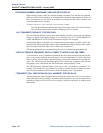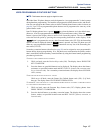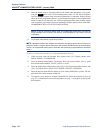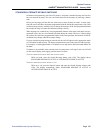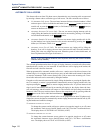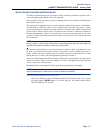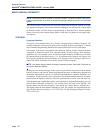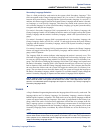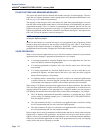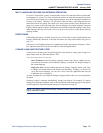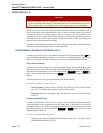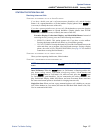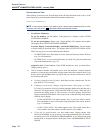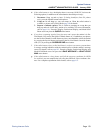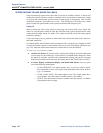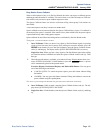
Page 174
System Features
AXXESS
®
ADMINISTRATOR’S GUIDE – January 2004
Do-Not-Disturb and Reminder Messages
DO-NOT-DISTURB AND REMINDER MESSAGES
The system has default Do-Not-Disturb and reminder messages in both languages. The mes-
sages that use Japanese characters can be reprogrammed only through an administrator’s sta-
tion (see page 18) or Database Programming.
The language of the messages seen by the station user, both when programming his or her sta-
tion and when calling another station that is in Do-Not-Disturb, are determined by the station’s
programmed language. That is, if a station is programmed for Japanese, the user will see only
Japanese messages when programing a message. If a Japanese-programmed station calls an
English-programmed station that has selected Do-Not-Disturb message 02, the Japanese sta-
tion’s user will see the Japanese version of message 02.
NOTE: Only digital display phones will display Japanese prompts. Other Inter-Tel phones do
not support Japanese prompts.
When Do-Not-Disturb or reminder messages are reprogrammed, the programmer should
attempt to keep the meanings for the messages in both lists the same. That is, if the Primary
Language Do-Not-Disturb message 02 is changed to “PAGE ME,” a similar message should be
programmed for the Secondary Language Do-Not-Disturb message 02.
VOICE PROCESSOR
When a Voice Processor application receives a call from a station or trunk, the system tells the
application which language is programmed for that device. For example:
• If a trunk programmed for American English rings in to an application, the Voice Pro-
cessor will play the American English prompts.
• If a station programmed for Japanese calls voice mail, the station user will hear Japa-
nese prompts.
• If a station programmed for American English receives a call on a trunk that is pro-
grammed for Japanese, and then transfers the call to voice mail, the caller (using the
trunk) will hear Japanese voice prompts.
• If a Japanese station is forwarded to voice mail, a caller on an American English station
or trunk will hear the “American English” prompts (the user-recorded mailbox greeting
will be heard in the language in which it was recorded) when the call is forwarded.
When using a Call Routing Announcement application with digit translation, the individual
Voice Processor applications assigned to the digits can be programmed to override the device
language and provide prompts in one language only. Using this method, you can program a
Call Routing Announcement tree that offers callers a choice between languages. For example:
• The Call Routing Announcement application could have a greeting that says, “Thank
you for calling. For English prompts, press 1. NIHONGO WA, 2 WO OSHITE KUDA-
SAI (for Japanese, press 2).”
• The digit translation for digit 1 would lead to an application that overrides the calling
device’s programming and uses only American English prompts.
• The digit translation for digit 2 would lead to an application that overrides the calling
device’s programming and uses only Japanese prompts.
In the example above, the digit translations could be nodes that lead to various other American
English-only or Japanese-only applications. Or, the first level can give more choices, such as
English voice mail or automated attendant and Japanese voice mail and automated attendant.
Either way, the individual applications or nodes can be programmed to play only one language
or they can use the device’s language, as needed.



